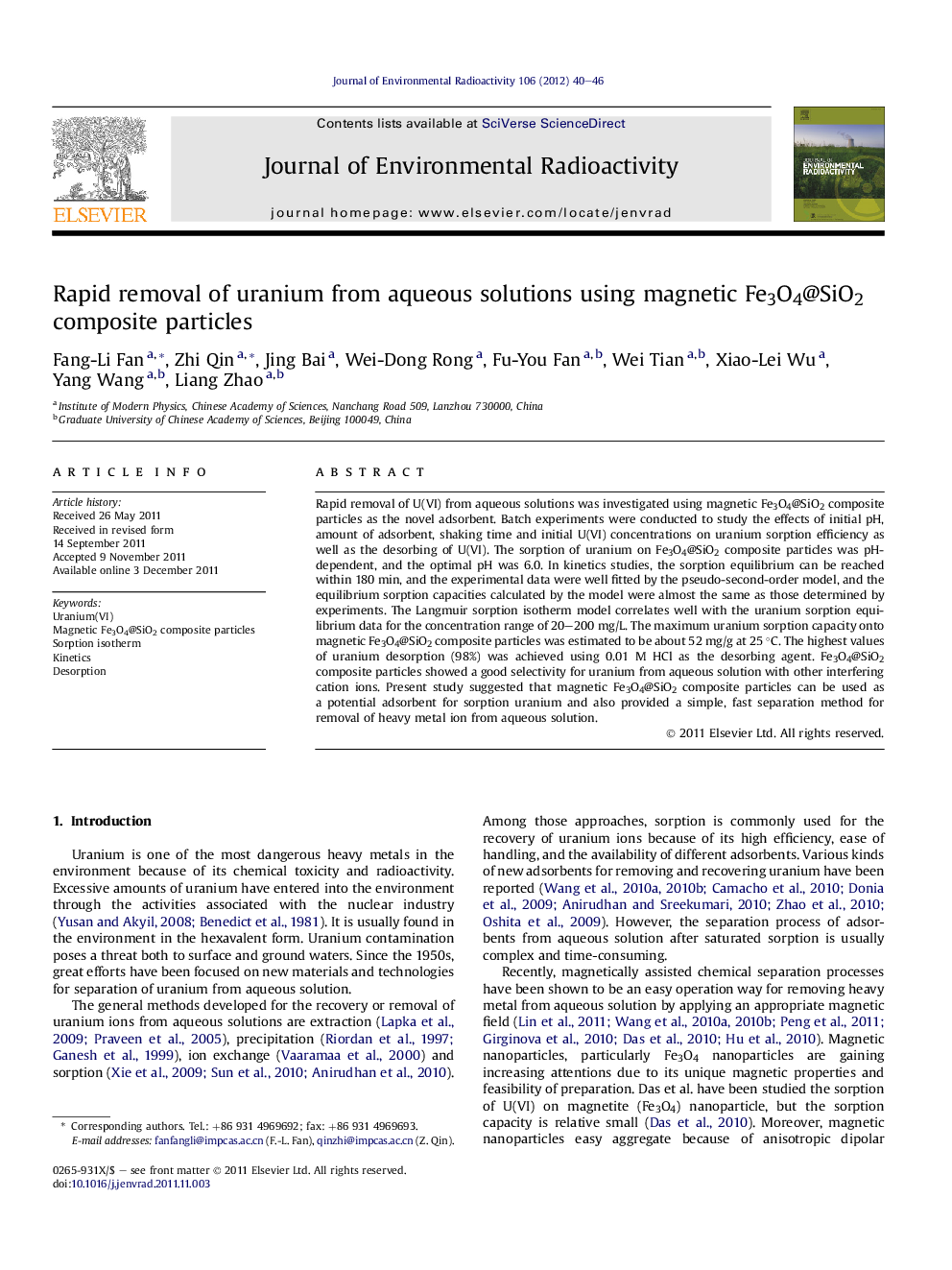| Article ID | Journal | Published Year | Pages | File Type |
|---|---|---|---|---|
| 1738489 | Journal of Environmental Radioactivity | 2012 | 7 Pages |
Rapid removal of U(VI) from aqueous solutions was investigated using magnetic Fe3O4@SiO2 composite particles as the novel adsorbent. Batch experiments were conducted to study the effects of initial pH, amount of adsorbent, shaking time and initial U(VI) concentrations on uranium sorption efficiency as well as the desorbing of U(VI). The sorption of uranium on Fe3O4@SiO2 composite particles was pH-dependent, and the optimal pH was 6.0. In kinetics studies, the sorption equilibrium can be reached within 180 min, and the experimental data were well fitted by the pseudo-second-order model, and the equilibrium sorption capacities calculated by the model were almost the same as those determined by experiments. The Langmuir sorption isotherm model correlates well with the uranium sorption equilibrium data for the concentration range of 20–200 mg/L. The maximum uranium sorption capacity onto magnetic Fe3O4@SiO2 composite particles was estimated to be about 52 mg/g at 25 °C. The highest values of uranium desorption (98%) was achieved using 0.01 M HCl as the desorbing agent. Fe3O4@SiO2 composite particles showed a good selectivity for uranium from aqueous solution with other interfering cation ions. Present study suggested that magnetic Fe3O4@SiO2 composite particles can be used as a potential adsorbent for sorption uranium and also provided a simple, fast separation method for removal of heavy metal ion from aqueous solution.
Graphical abstractPresent study showed that magnetic Fe3O4@SiO2 composite particles can be used as a potential adsorbent for sorption uranium and also provided a simple, fast separation method for removal of heavy metal ion from aqueous solution.Figure optionsDownload full-size imageDownload as PowerPoint slideHighlights► A potential and unique technique for recovery of heavy metal ions was provided. ► Magnetic Fe3O4@SiO2 composite particles show effective sorption for uranium. ► Sorption equilibrium isotherms fitted well by the Langmuir model. ► Kinetics of sorption fitted by pseudo-second-order. ► Magnetic composite particles can be regenerated easily and reused.
